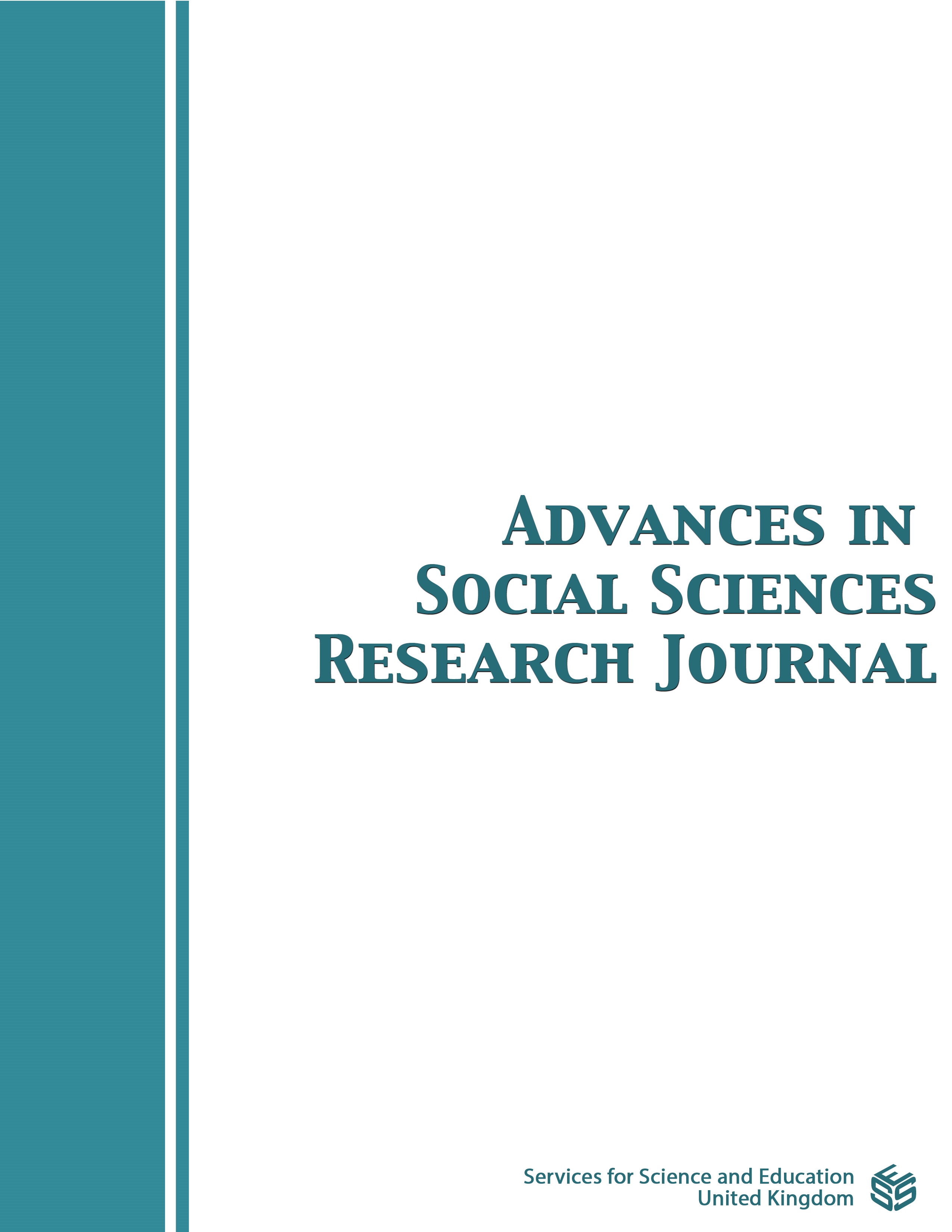The Effect of Internal Meaning on Purchase Decision With Attitude Mediation: A Quantitative Explanatory Study of Brawijaya University Students' Internal Meaning of BTS Meal Co-Branding Products
DOI:
https://doi.org/10.14738/assrj.95.12481Keywords:
The semantic meaning theory, Osgood's Semantic Differential, marketing communication, co-branding ProductAbstract
This research is a study of the study of internal meaning in the study of marketing communications, based on Osgood's theory or commonly known as the semantic meaning theory. in Osgood's theory, the meaning of a person is said to lie in a metamorphosis space which consists of three main dimensions, namely evaluate, activity, and potency. The purpose of this study was to analyze the effect of internal meaning on purchase decisions with Attitude mediation. The research object chosen was the BTS Meal co-branding product, which was the result of a collaboration between McDonald’s and the K-Pop boy band Bangtan Boys (BTS). The research sample used a convenience sampling technique consisting of 100 Brawijaya University students from various faculties. This type of research is quantitative and the method used in this research is a survey. The data analysis method used in this study is Partial Least Square (PLS) with the help of the SmartPLS Version 3 program.
The findings of this study revealed that the influence of internal meaning on purchase decision with evaluate indicator through Attitude mediation does not affect purchase decision. The influence of internal meaning on purchase decision with activity indicator through mediation Attitude affects purchase decision. The influence of internal meaning on purchase decision with potency indicator through mediation Attitude affects purchase decision. The results of this study reveal that Attitude affects purchase decision.
References
Ahn, H., & Sung, Y. (2012). A two-dimensional approach to between-partner fit in co-branding evaluations. Journal of Brand Management, 19(5), 414–424. https://doi.org/10.1057/bm.2011.49
Chang, W.-L. (2009). Roadmap of Co-branding Positions and Strategies. Journal of American Academy of Business, Cambridge, 15(1), 77–84. http://wv9lq5ld3p.search.serialssolutions.com.library.capella.edu/?ctx_ver=Z39.88-2004&ctx_enc=info:ofi/enc:UTF-8&rfr_id=info:sid/ProQ%253Aabiglobal&rft_val_fmt=info:ofi/fmt:kev:mtx:journal&rft.genre=article&rft.jtitle=Journal+of+American+Academy+of+Busin
Churiyah, S. dan. (2017). Pengaruh Sikap Konsumen terhadap Keputusan Pembelian Minuman Merek Aqua Berkaitan dengan Penerapan Program CSR (Corporate Sosial Responsibility). Ekonomi Modernisasi, 3(2), 147–164.
Colwell, S. R., Aung, M., Kanetkar, V., & Holden, A. L. (2008). Toward a measure of service convenience: Multiple-item scale development and empirical test. Journal of Services Marketing, 22(2), 160–169. https://doi.org/10.1108/08876040810862895
Dickinson, S., & Barker, A. (2007). Evaluations of branding alliances between non-profit and commercial brand partners: the transfer of affect. International Journal of Nonprofit and Voluntary Sector Marketing, 12(1), 75–89. https://doi.org/10.1002/nvsm.291
Ghozali dan Latan. (2015). Partial Least Squares Konsep, Teknik dan Aplikasi Menggunakan Program SmartPLS 3.0. Diponegoro. Universitas Dipenegoro.
Gumulya & Talitha Alsyia Onggo. (2016). Penelitian Persepsi Kemasan Produk Skin Care Wanita dengan Pendekatan Teori Semantik. Journal of Visual Art and Design, 8(2), 119. https://doi.org/10.5614/j.vad.2016.8.2.4
Hussein, A. S. (2015). Penelitian Bisnis dan Manajemen Menggunakan Partial Least Squares dengan SmartPLS 3.0. Universitas Brawijaya, 1, 1–19. https://doi.org/10.1023/A:1023202519395
Kotler, Philip & Keller, K. L. (2009). Manajemen Pemasaran (13 ed.). Erlangga.
Kotler, P. (2010). Manajemen pemasaran (1 ed.). Prehallindo.
Kriyantono, R. (2009). Teknis Praktis Riset Komunikasi. PrenadaMedia Group.
Kriyantono, R. (2014). Teknik Praktis Riset Komunikasi. Kencana Prenadamedia Group.
Kriyantono, R. (2017). Consumers’ Internal Meaning on Complementary Co-Branding Product by Using Osgood’s Theory of Semantic Differential. GATR Journal of Management and Marketing Review, 2(2), 57–63. https://doi.org/10.35609/jmmr.2017.2.2(9)
Kriyantono, R. (2019). Aplikasi Teori Osgood untuk Evaluasi Pemaknaan Internal Strategi Komunikasi Pemasaran Co-branding. Jurnal Ilmu Komunikasi, 17(2), 193. https://doi.org/10.31315/jik.v17i2.2855
Kriyantono, R. (2020). Teknik praktis riset komunikasi kuantitatif dan kualitatif. PrenadaMedia Group.
Little John, S. W. & F. K. W. (2009). Teori Komunikasi (Theories of Human Communication) (9 ed.). Salemba Humanika.
Lukyandari, D. (2014). Teori Osgood Dalam Pemaknaan Internal Produk Co-Branding (Studi Deskriptif Kuantitatif pada Produk Co-branding IM3-Arema). Universitas Brawijaya.
Morissan A., M. (2010). Periklanan Komunikasi Pemasaran Terpadu (Kencana (ed.).
Mubarok, M. M. (2018). The Effect of Brand Image and Consumer Attitudes on The Decision to Purchase Batik Jetis Sidoarjo Mediated by Interest to buy. Journal of Economics, Business & Accountancy Ventura, 21(1), 105–116. https://doi.org/10.14414/jebav.v21i1.1134
Mulyana Deddy. (2017). Ilmu Komunikasi Suatu Pengantar. PT Remaja Rosdakarya.
O’Dwyer, M., Gilmore, A., & Carson, D. (2011). Strategic alliances as an element of innovative marketing in SMEs. Journal of Strategic Marketing, 19(1), 91–104. https://doi.org/10.1080/0965254X.2010.537765
Schiffman, L. G. & L. L. K. (2007). Consumer Behavior (Ninth Edit). pearson education.Inc.
Vigneron, F., & Johnson, L. W. (2004). Vigneron-Johnson2004_Article_MeasuringPerceptionsOfBrandLux. Brand Management, 11(6), 484–506.
Warayuanti, W., & Suyanto, A. (2015). The Influence of Lifestyles and Consumers Attitudes on Product Purchasing Decision via Online Shopping in Indonesia. European Journal of Business and Management, 7(8), 74–80. https://www.iiste.org/Journals/index.php/EJBM/article/view/20944
Downloads
Published
How to Cite
Issue
Section
License
Copyright (c) 2022 Riky Pranata

This work is licensed under a Creative Commons Attribution 4.0 International License.
Authors wishing to include figures, tables, or text passages that have already been published elsewhere are required to obtain permission from the copyright owner(s) for both the print and online format and to include evidence that such permission has been granted when submitting their papers. Any material received without such evidence will be assumed to originate from the authors.






